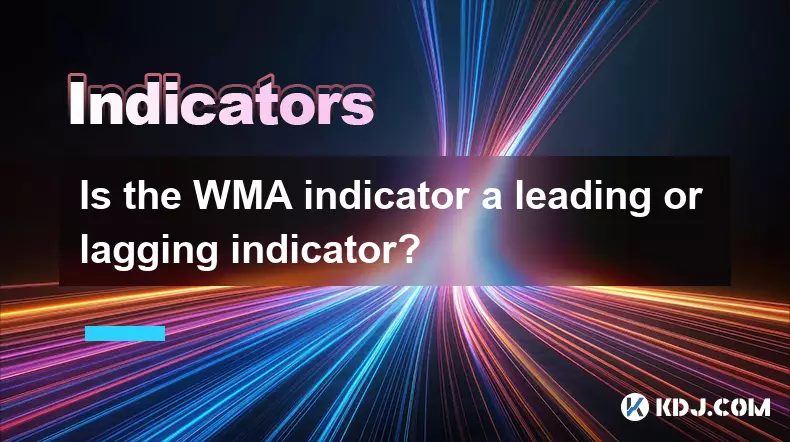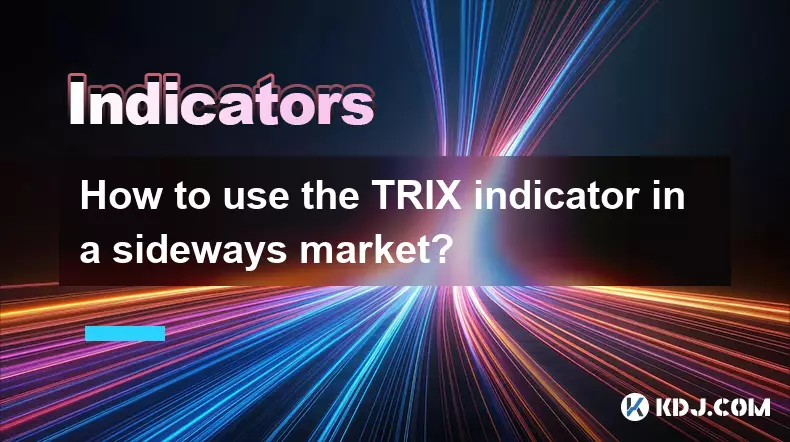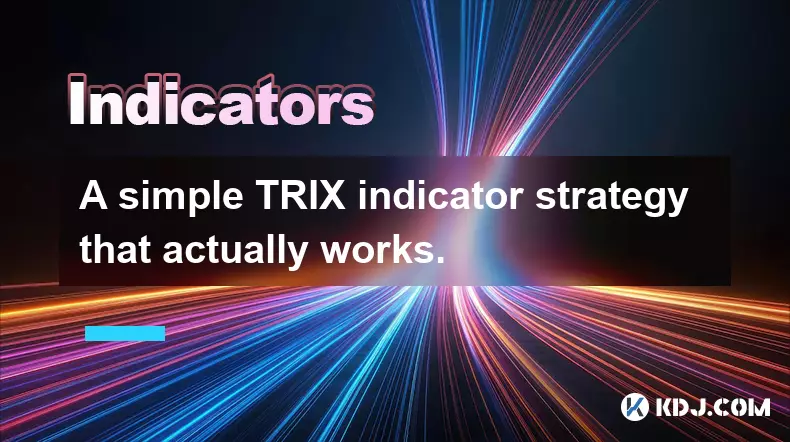-
 bitcoin
bitcoin $105968.894684 USD
4.17% -
 ethereum
ethereum $3639.320047 USD
7.62% -
 tether
tether $1.000339 USD
0.06% -
 xrp
xrp $2.407774 USD
5.96% -
 bnb
bnb $1011.704193 USD
2.28% -
 solana
solana $166.942754 USD
6.37% -
 usd-coin
usd-coin $1.000143 USD
0.03% -
 tron
tron $0.291515 USD
0.25% -
 dogecoin
dogecoin $0.181682 USD
4.06% -
 cardano
cardano $0.585450 USD
4.54% -
 hyperliquid
hyperliquid $42.099968 USD
5.20% -
 chainlink
chainlink $16.160745 USD
5.45% -
 zcash
zcash $645.269648 USD
12.96% -
 bitcoin-cash
bitcoin-cash $507.430338 USD
2.80% -
 stellar
stellar $0.290357 USD
3.69%
Is the WMA indicator a leading or lagging indicator?
The WMA is a responsive crypto trading tool that prioritizes recent prices, helping traders spot trends and reversals faster than SMA—though it remains a lagging indicator.
Nov 06, 2025 at 11:09 am

Understanding the WMA Indicator in Cryptocurrency Trading
The Weighted Moving Average (WMA) is a widely used technical analysis tool within the cryptocurrency trading community. Unlike simple moving averages, the WMA assigns greater importance to recent price data, making it more responsive to new information. This characteristic influences how traders interpret market momentum and potential reversals.
How the WMA Functions in Market Analysis
- 1. The WMA calculates average prices over a specific period, but multiplies each price point by a weighting factor based on its position in the sequence—most recent prices receive higher weights.
- 2. In fast-moving crypto markets, this responsiveness allows traders to detect shifts in sentiment quicker than with equal-weighted models like the SMA.
- 3. Because of the emphasis on current data, the WMA tends to react faster to sudden price spikes or drops common during high volatility events such as exchange breaches or regulatory news.
- 4. Traders often combine WMA crossovers—such as a short-term WMA crossing above a long-term one—with volume indicators to confirm breakout signals in altcoin pairs.
- 5. Its adaptability makes it suitable for both day trading setups on exchanges like Binance and swing trading strategies across decentralized platforms.
The WMA Is a Lagging Indicator Despite Enhanced Sensitivity
- 1. Even though the WMA prioritizes recent prices, it still relies entirely on historical data, which inherently delays its signal generation compared to real-time price action.
- 2. No moving average can predict future price movements; they only reflect past behavior, placing them firmly in the category of lagging indicators.
- 3. During sharp reversals in Bitcoin or Ethereum trends, the WMA may continue pointing upward or downward even after the actual market has turned, leading to delayed exit or entry points.
- 4. Some traders attempt to reduce this lag by shortening the period length, but doing so increases noise and false signals, especially in low-cap tokens prone to manipulation.
- 5. While more dynamic than other moving averages, the WMA cannot escape the fundamental limitation of using backward-looking inputs to inform forward decisions.
Practical Applications of WMA in Crypto Strategies
- 1. On 4-hour charts for major cryptocurrencies, traders use the 20-period WMA to identify the prevailing trend direction while filtering out minor fluctuations.
- 2. When the price consistently trades above the WMA line, it signals bullish control, often used as a filter before entering long positions in assets like Solana or Cardano.
- 3. A close below the WMA after an extended uptrend may prompt risk management actions, including tightening stop-loss orders or reducing exposure in leveraged trades.
- 4. Pairing the WMA with oscillators such as the RSI helps distinguish between genuine trend exhaustion and temporary pullbacks amid strong directional moves.
- 5. In range-bound markets, the WMA flattens and loses effectiveness, prompting experienced traders to switch to sideways-channel indicators instead.
Frequently Asked Questions
Q: Can the WMA be used effectively in scalping strategies?A: Yes, when applied to lower timeframes like 1-minute or 5-minute charts, the WMA’s sensitivity to recent prices can help scalpers capture small intraday movements. However, due to increased market noise, confirmation from order book depth or volume profiles is recommended to avoid whipsaws.
Q: How does the WMA differ from the Exponential Moving Average (EMA)?A: Both emphasize recent prices, but the EMA applies a smoothing constant that decays exponentially, while the WMA uses a linear weighting system. The EMA is generally considered slightly more reactive, though the difference is marginal in live crypto trading scenarios.
Q: Is the WMA suitable for analyzing DeFi token prices?A: It can be useful, particularly for established DeFi projects with consistent trading volume. For newer or illiquid tokens, erratic price swings may render WMA signals unreliable without additional filters such as on-chain activity metrics.
Disclaimer:info@kdj.com
The information provided is not trading advice. kdj.com does not assume any responsibility for any investments made based on the information provided in this article. Cryptocurrencies are highly volatile and it is highly recommended that you invest with caution after thorough research!
If you believe that the content used on this website infringes your copyright, please contact us immediately (info@kdj.com) and we will delete it promptly.
- XRP Primed for a Major Leg-Up? Technical Analysts Weigh In
- 2025-11-11 00:30:02
- Bitcoin Price, JPMorgan, and the Crypto Moves You Need to Know
- 2025-11-10 22:50:02
- XRP ETFs in 2026: Will They Reshape the Crypto Landscape?
- 2025-11-10 22:50:02
- Decred Price Prediction: Navigating the Bull Market Buzz
- 2025-11-10 23:05:01
- Brett Coin, Crypto Presale, 1000X Prediction: What's the Hype?
- 2025-11-10 23:05:01
- Starknet (STRK) Price Surges: Decoding the Reasons Behind the Pump
- 2025-11-10 23:15:01
Related knowledge

What's the best way to learn the TRIX indicator?
Nov 10,2025 at 12:39pm
Understanding the Basics of the TRIX Indicator1. The TRIX (Triple Exponential Average) indicator is a momentum oscillator designed to filter out short...

How do professional traders use the TRIX indicator?
Nov 06,2025 at 04:40pm
Understanding the TRIX Indicator in Crypto TradingThe TRIX (Triple Exponential Average) indicator is a momentum oscillator used by professional trader...

Can I use the TRIX indicator on my mobile trading app?
Nov 07,2025 at 07:40pm
The TRIX indicator, a momentum oscillator designed to filter out short-term fluctuations and highlight long-term trends, has become increasingly popul...

How to use the TRIX indicator in a sideways market?
Nov 10,2025 at 03:00pm
Bitcoin’s Role in Decentralized Finance Evolution1. Bitcoin remains the cornerstone of decentralized finance, serving as both a store of value and a b...

How to code a simple TRIX indicator script in Pine Script?
Nov 07,2025 at 06:20am
How to Code a Simple TRIX Indicator in Pine Script The TRIX (Triple Exponential Moving Average) indicator is widely used in cryptocurrency trading to ...

A simple TRIX indicator strategy that actually works.
Nov 08,2025 at 05:39pm
Understanding the TRIX Indicator in Crypto Trading1. The TRIX (Triple Exponential Average) indicator is a momentum oscillator designed to filter out s...

What's the best way to learn the TRIX indicator?
Nov 10,2025 at 12:39pm
Understanding the Basics of the TRIX Indicator1. The TRIX (Triple Exponential Average) indicator is a momentum oscillator designed to filter out short...

How do professional traders use the TRIX indicator?
Nov 06,2025 at 04:40pm
Understanding the TRIX Indicator in Crypto TradingThe TRIX (Triple Exponential Average) indicator is a momentum oscillator used by professional trader...

Can I use the TRIX indicator on my mobile trading app?
Nov 07,2025 at 07:40pm
The TRIX indicator, a momentum oscillator designed to filter out short-term fluctuations and highlight long-term trends, has become increasingly popul...

How to use the TRIX indicator in a sideways market?
Nov 10,2025 at 03:00pm
Bitcoin’s Role in Decentralized Finance Evolution1. Bitcoin remains the cornerstone of decentralized finance, serving as both a store of value and a b...

How to code a simple TRIX indicator script in Pine Script?
Nov 07,2025 at 06:20am
How to Code a Simple TRIX Indicator in Pine Script The TRIX (Triple Exponential Moving Average) indicator is widely used in cryptocurrency trading to ...

A simple TRIX indicator strategy that actually works.
Nov 08,2025 at 05:39pm
Understanding the TRIX Indicator in Crypto Trading1. The TRIX (Triple Exponential Average) indicator is a momentum oscillator designed to filter out s...
See all articles























![🔥 Long awaited! The ancestor of Pi coin is about to take off? PI friends, come in and take a look! [Daily Coin Selection | Bitcoin Trend | Money Making Opportunities] 🔥 Long awaited! The ancestor of Pi coin is about to take off? PI friends, come in and take a look! [Daily Coin Selection | Bitcoin Trend | Money Making Opportunities]](/uploads/2025/11/10/cryptocurrencies-news/videos/6911e42f9bad7_image_500_375.webp)


















































